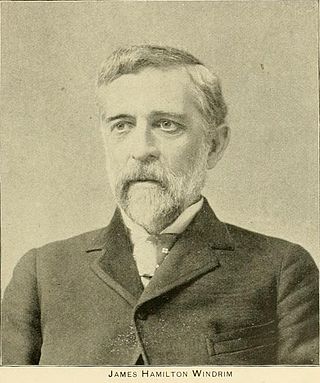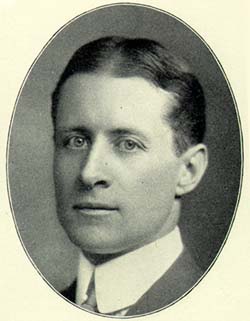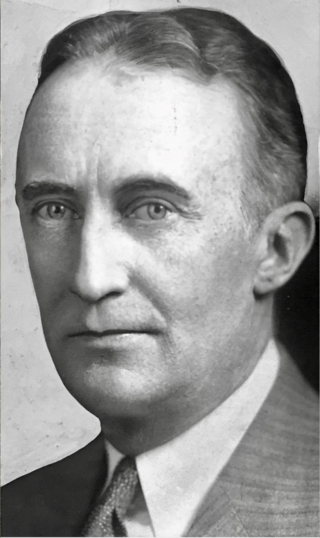
Frank Heyling Furness was an American architect of the Victorian era. He designed more than 600 buildings, most in the Philadelphia area, and is remembered for his diverse, muscular, often inordinately scaled buildings, and for his influence on the Chicago-based architect Louis Sullivan. Furness also received a Medal of Honor for bravery during the Civil War.

Cyrus Hermann Kotzschmar Curtis was an American publisher of magazines and newspapers, including the Ladies' Home Journal and The Saturday Evening Post.

Peabody & Stearns was a premier architectural firm in the Eastern United States in the late 19th century and early 20th century. Based in Boston, Massachusetts, the firm consisted of Robert Swain Peabody (1845–1917) and John Goddard Stearns Jr. (1843–1917). The firm worked on in a variety of designs but is closely associated with shingle style.

Rhawnhurst is a residential neighborhood in the Northeast section of Philadelphia, Pennsylvania, United States, named for George and William Rhawn by area real estate developers. Roughly bordered by Cottman Avenue to the south, Pennway Street to the west, the Pennypack Creek to the north, and Roosevelt Boulevard to the east, Rhawnhurst encompasses ZIP codes 19152 and part of ZIP code 19111. The geographic center of Rhawnhurst is at the intersection of Castor Avenue and Rhawn Street.
The Tri-State League was the name of six different circuits in American minor league baseball.

Horace Trumbauer was a prominent American architect of the Gilded Age, known for designing residential manors for the wealthy. Later in his career he also designed hotels, office buildings, and much of the campus of Duke University.

G. W. & W. D. Hewitt was a prominent architectural firm in the eastern United States at the turn of the twentieth century. It was founded in Philadelphia in 1878, by brothers George Wattson Hewitt (1841–1916) and William Dempster Hewitt (1847–1924), both members of the American Institute of Architects. The firm specialized in churches, hotels and palatial residences, especially crenelated mansions, such as Maybrook (1881), Druim Moir (1885–86) and Boldt Castle (1900–04).

Theophilus Parsons Chandler Jr. was an American architect of the late 19th and early 20th centuries. He spent his career at Philadelphia, and is best remembered for his churches and country houses. He founded the Department of Architecture at the University of Pennsylvania (1890), and served as its first head.

Wilson Eyre, Jr. was an American architect, teacher and writer who practiced in the Philadelphia area. He is known for his deliberately informal and welcoming country houses, and for being an innovator in the Shingle Style.
Mantle Fielding, Jr. was an American architect, art historian, and tennis player.

Willow Grove Park Mall is a three-story shopping mall located in the community of Willow Grove in Abington Township, Pennsylvania at the intersection of Easton Road and Moreland Road in the Philadelphia suburbs. The Willow Grove Park Mall contains over 120 stores - with Bloomingdale's, Primark, Macy's, Nordstrom Rack, and Tilted 10 as anchor stores - along with several restaurants including The Cheesecake Factory, TGI Fridays, and Yard House. It is owned by Pennsylvania Real Estate Investment Trust (PREIT) and is the third most profitable mall in the Philadelphia area. The mall features a carousel, scenic elevator, and formerly featured a fountain. In October, the fountain was illuminated pink for Breast Cancer Awareness Month.

Edward John May (1853–1941) was an English architect.
Frank Rushmore Watson (1859–1940) was a Philadelphia architect specializing in church architecture. He graduated from Central High School, Philadelphia, in 1877. Watson entered the office of Edwin Forrest Durang, an eminent architect concentrating on Roman Catholic church projects during the last quarter of the nineteenth century. Watson spent five years with Durang before establishing his own independent firm in 1882 or 1883. While not limiting his practice to Roman Catholic projects, Watson still became well known for his church designs. So successful was he that he opened a branch office in Atlantic City, New Jersey in 1898. In 1901 or 1902, when Samuel Huckel returned to Philadelphia, a partnership between the two was established under the name Watson & Huckel. Huckel's experience with Benjamin D. Price, another architect known for his church designs, as well as his experience with Edward Hazelhurst in the firm of Hazelhurst & Huckel stood the new partnership in good stead; and the office prospered until Huckel's death in 1917. Watson then continued practicing independently until 1922, when he was joined by the younger architects, George E. Edkins, and William Heyl Thompson. At the outset, this firm was one of association, but soon the name became Watson, Edkins & Thompson. When Edkins moved to Oaklyn, New Jersey in 1936, Watson & Thompson continued in practice until Watson's death in 1940.

Wissahickon is a neighborhood in the section of Lower Northwest Philadelphia in the state of Pennsylvania, United States. Wissahickon is located adjacent to the neighborhoods of Roxborough and Manayunk, and it is bounded by the Wissahickon Valley Park, Ridge Avenue, Hermit Street, and Henry Avenue. The name of the neighborhood is derived from the Lenni Lenape word wisameckham, for "catfish creek", a reference to the fish that were once plentiful in the Wissahickon Creek.
Ernest Newton was an English architect, President of Royal Institute of British Architects and founding member of the Art Workers' Guild.

Robert W. Gibson, AIA, was an English-born American ecclesiastical architect active in late-nineteenth- and early-twentieth-century New York state. He designed several large Manhattan churches and a number of prominent residences and institutional buildings.

James Hamilton Windrim was a Philadelphia architect who specialized in public buildings, including the Masonic Temple in Philadelphia and the U.S. Treasury. A number the buildings he designed are on the National Historic Landmarks and/or the National Register of Historic Places, including the Masonic Temple in Philadelphia and the National Savings and Trust Company building in Washington, DC.

Edgar Viguers Seeler (1867–1929) was an American architect.

Cheltenham Township is a Home Rule Municipality and Township of the First Class located in the southeast corner of Montgomery County, Pennsylvania, United States. It borders the City of Philadelphia to the south and east, Abington Township and the borough of Jenkintown to the north, and Springfield Township to the west.

Walter Horstmann Thomas (1876–1948) was an American architect from Philadelphia whose career spanned 44 years. He is best known for approximately eighty church designs.
















